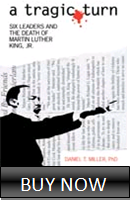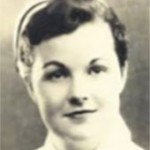
Now And Today, October 20, 2020
Promised Land. Promised Time.
Outside the gate the fog is gone and the fields are clear. Time for you to run through. Away from rules and strictures, from fences. The air freshens, the light brightens, and the sounds ring just a little bit truer. How great it is.
You’ve gone somewhere or you are somewhere and the pandemic didn’t follow in full. Vacation, a pastime, a particular home or private place and for a few hours or days it seemed as if your normal life was back. True, you still see signs of right now. Overall, though, there’s no comparison in the feeling you have every other day and the one you have at this moment for this little while. A deep breath in. The scenery. A deep breath out. The sensations. You’d nearly forgotten how a minute could be. You’re reminded of when neither you nor anyone else knew different. Hard to accept how hard to remember those days, and not simply before it began but before it ever was.
Somewhere up ahead, at a point in the future, likely just a few months away, you’ll know it’s going to happen. The temporary feeling you’re having right now will lengthen into the normal. It will become everyday. The gates will open up and the fences will come down. Life will find the normal. You sense one part of getting there is turning the page on the year, tossing the old calendar in the trash. And then, not long after, you’ll see it.
The Promised Time is out there. You’ll be amazed how quickly it happens.
* * * *
Then, October 20, 1918
Along the chilly waters of Columbia River, the gates open and shut in the same second. If you’re inclined to read one of Portland, Oregon’s leading newspapers—and it’s the best way to get the news if you’re trying to keep up with the World War or with an election day that is not far away—you’ll see this headline: “Health Condition In Portland Is Almost Normal.” Well, thank goodness.
Just a second. Put down the newspaper. Then you see the signs.
Not far from your home or your work is the Civic Auditorium in downtown Portland. A neighbor of yours passes along a news item of a different sort—they’re opening up Portland’s Civic Auditorium to use as a temporary hospital facility for all the new influenza patients. Turns out that just yesterday, in a single day, 1000 new cases are identified.
That doesn’t sound like “almost normal.”
The almost-normal is equally absent in Chicago, Illinois as well. The people who are in charge of Chicago’s hospitals hold a special meeting today. Called superintendents, these formal leaders of the city’s major healthcare facilities are gathering together behind closed doors to talk honestly and frankly about influenza. It’s bad and it’s ripping apart this American city off the choppy waters of southwestern Lake Michigan. The superintendents decide in the moment “to arrange for additional space for influenza cases. They ordered that no surgery, except emergency cases, should be done until further notice.” The hospitals and everyone in them, the doctors and nurses and staff and volunteers, need to focus on one thing—influenza.
Dr. Victor Lespinasse has an office on Madison Street in Chicago. He submits an advertisement that runs in today’s edition of a city newspaper. He’s seeking people recently recovered from influenza who are willing to donate blood for potential use with current influenza cases. He believes “immune blood” can help specific patients. To sweeten the deal, he offers “liberal compensation.” Blessed with the middle name of Darwin, Dr. Lespinasse is a medical innovator, having performed the first neuroendoscopic procedure in the city five years earlier. He is one of those leaders who comes right up to the edge separating the conventional from the uncharted. He stands at the edge and wonders.
Two unnamed men in Birmingham, Alabama are giving up. They’ve been trying to care for a baby whose parents are severely ill from influenza and have been taken to a local hospital. Watching as the frantic parents were carried to a wagon, the men had agreed in the moment to care for the baby until things somehow cleared up. No one knows if the mother or father will live. After trying their best—the baby was hungry, terrified, and perhaps only hours away from developing symptoms of influenza—the two men agree to notify a writer with the Birmingham News about their situation. The writer, Lucy Dickinson, writes the story for the next edition of the newspaper, begging for someone to step forward.
The mother and father lay flat on narrow hospital beds.
The two men return empty-handed to an empty house next to an empty home.
The woman waits for an answer to her written plea in the newspaper.
The baby cries itself to sleep.
One day, each of them will know the end and the pandemic will be no more.
* * * * *
Looking Ahead From Today, October 20, 2020
The Promised Land. The term is in religious worship, in the aspirations of immigration, in just about any far-off place framed in thought as a hoped-for improvement. Out there is a space where the better is reality and the best is real. Between you and there is an expanse that will have to be crossed and which, for you, is a moving place of endurance. It is a mass spotted with stories about another destination. The destination is beyond the mass and you will call it Promised Land.
The Promised Time is really no different from the Promised Land. It is out there, across, the point beyond and the point set past the furthest edge. A mass separates now from then. Along the mass is a plodding motion, inside the lines and close to the wires. The edges of do’s and don’ts are worn smooth, the old tautness made loose. The gate, though fastened, is the same vintage as the fence. Outside the fence night falls sooner than it once did. They say there are figures up in the stars but they’re hard to see and even if they weren’t, you don’t know enough to draw them. It’s a regret not to have learned.
Let’s admit we’re small, you and I. The figures in the sky care nothing for us and know we do nothing for them. They are on the move with new angles and postures overhead. In blackness that never ends they turn and turn and when they turn again, they will strike and strike in a cold heat. Silently, then, fresh from a dark forge, a key enters and turns a lock and the gate moves like the stars and the fence falls away. It is the Promised Time.
And the baby will cry no more.
* * * * *
For Those Wanting To Bridge 2020 And 1918, A Reminder…
Warfluenza and Warcorona.
Warfluenza is what Americans experienced in 1918 when influenza interacted with their dominant issue and concern of the day, World War One. The illness comes to them through their handling of and coping with World War One. That’s why I want you to think of it as Warfluenza. The pandemic and the issue affect each other.
Warcorona is what Amercians are experienced in 2020 when coronavirus interacts with our dominant issue and concern of the day, World War Trump. Regardless of whether you love or hate Trump, Trumpism, and the Trump Presidency, it blends with the illness and thus we handle and cope with both together, inseparable. It’s Warfluenza updated to our world—Warcorona.
I want to reintroduce you to the world of Warfluenza’s Wave Two because we’re in Warcorona’s Wave Two right now with preschool-to-grad school education. If you have someone somewhere in that track, you’re in Wave Two. And so we’re following Warfluenza and Warcorona on exactly the same days across 102 years. Mark Twain is supposed to have said that history doesn’t repeat but it sure does rhyme. Count me as a “yes” to that statement.
As always, I invite you to reach out to me. Leave a comment here, email at dan@historicalsolutions.com , or text at 317-407-3687.







